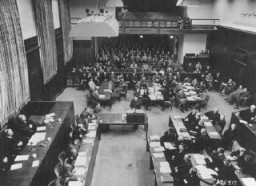You searched for: ���������������qee9.com������������������������6������S2O
<< Previous | Displaying results 26-50 of 268 for "���������������qee9.com������������������������6������S2O" | Next >>
-
Corpses of prisoners killed in Gunskirchen
PhotoCorpses of prisoners killed in the Gunskirchen camp. Gunskirchen was one of the many subcamps of the Mauthausen camp. It was liberated by US forces in early May 1945. Gunskirchen, Austria, photo taken between May 6 and May 15, 1945.
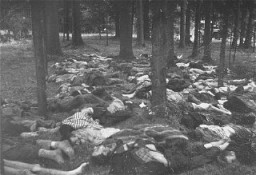
-
Dining room at the Landsberg displaced persons camp
PhotoA US flag hangs from the ceiling of the main dining room at the Landsberg displaced persons camp. Germany, December 6, 1945.
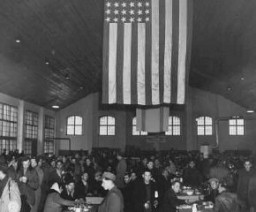
-
Destroyed Jewish cemetery in Salonika
PhotoView of the destroyed Jewish cemetery in German-occupied Salonika. The tombstones would be used as building materials. Salonika, Greece, after December 6, 1942.
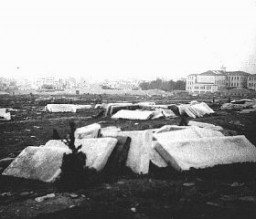
-
Identification photos of prisoner accused of homosexuality
PhotoIdentification pictures of a prisoner, accused of homosexuality, who arrived at the Auschwitz camp on June 6, 1941. He died there a year later. Auschwitz, Poland.
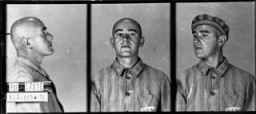
-
A concentration camp in view
PhotoAmerican Legion officials touring Germany and Austria pass through the Dora-Mittelbau concentration camp, near Nordhausen. Germany, after June 6, 1945.
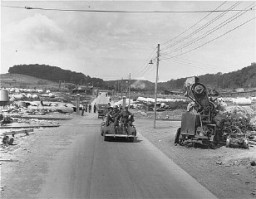
-
Troops approach Omaha Beach on D-Day
PhotoAssault troops in a landing craft approach Omaha Beach on D-Day. Normandy, France, June 6, 1944.
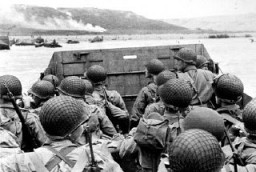
-
US troops landing at Normandy on D-Day
PhotoUS troops wade through the surf on their arrival at the Normandy beaches on D-Day. Normandy, France, June 6, 1944.
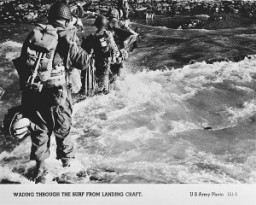
-
US troops pull the survivors ashore on D-Day
PhotoUS troops pull the survivors of a sunken craft on to the shores of the Normandy beaches on D-Day. Normandy, France, June 6, 1944.
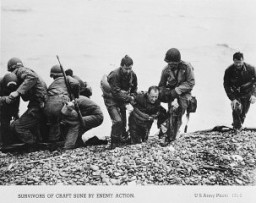
-
British troops land on D-Day
PhotoBritish troops land on the beaches of Normandy on D-Day, the beginning of the Allied invasion of France to establish a second front against German forces in Europe. Normandy, France, June 6, 1944.
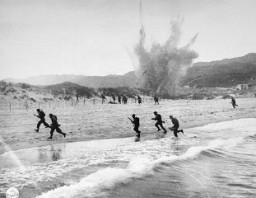
-
The 102nd Infantry Division
ArticleOn April 14, 1945, the US 102nd Infantry Division uncovered the site of a hideous massacre of concentration camp prisoners outside the town of Gardelegen.
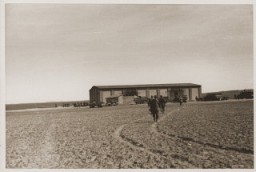
-
Paul Klee
ArticlePaul Klee was a German-Swiss painter and graphic artist who taught at the Bauhaus. His art was targeted in the Nazi book burnings and “Degenerate Art” exhibition.
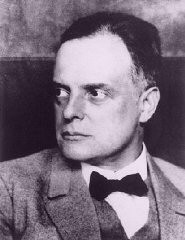
-
Canadian troops on D-Day
PhotoCanadian troops of the 'B' Company, North Shore (New Brunswick) Regiment take cover on June 6, 1944, or D-Day.
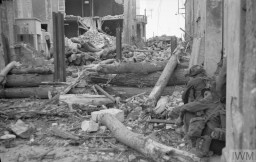
-
John D. Rastelli describes entering occupied Austria and burial of the dead in Mauthausen
Oral HistoryJohn D. Rastelli is a veteran of the 11th Armored Division. During the invasion of German-held Austria, in May 1945 the 11th Armored (the "Thunderbolt" division) overran two of the largest Nazi concentration camps in the country: Mauthausen and Gusen.
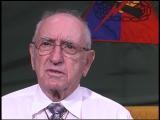
-
Adolf Hitler: 1930-1933
ArticleUnder Adolf Hitler's leadership, the Nazi regime was responsible for the mass murder of 6 million Jews and millions of other victims. Learn about Hitler in the years 1930-1933.
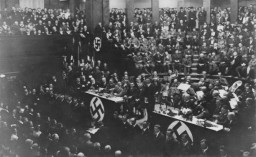
-
World War II in Europe
ArticleGermany started World War II in Europe on September 1, 1939, by invading Poland. War would continue until 1945. Learn more about WWII and genocide in Europe.
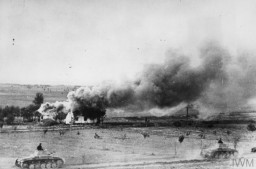
-
1944: Key Dates
ArticleExplore a timeline of key events during 1944 in the history of Nazi Germany, World War II, and the Holocaust.
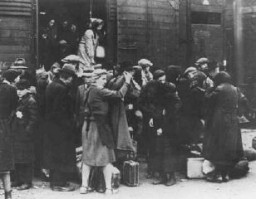
-
The Rosenstraße Demonstration, 1943
ArticleIn February/March 1943, non-Jewish Germans protest the incarceration of their Jewish family members at Rosenstrasse 2-4 in Berlin. Learn about the impact of the protest.
-
Theresienstadt: Final Weeks, Liberation, and Postwar Trials
ArticleThe Theresienstadt camp-ghetto existed from 1941 to 1945. Learn about its final weeks, liberation, and the postwar trials of SS commandants and other staff.
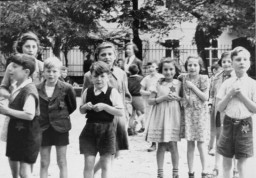
-
Nuremberg Trials
ArticleTrials of top surviving German leaders for Nazi Germany’s crimes began in Nuremberg after World War II. Read about the Nuremberg trials.
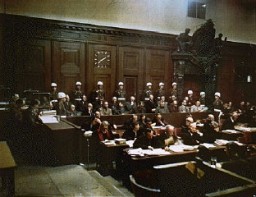
-
D-Day: Historical Film Footage
Media EssayOn June 6, 1944, Allied troops landed on the beaches of Normandy, France. Commonly known as D-Day, the invasion was one of the most important Allied military operations during World War II.
-
Scene during fighting in the Hürtgen Forest
PhotoAn American anti-aircraft gun, towed by a truck camouflaged with foliage, moves into position in the Hürtgen Forest to provide fire support against ground targets. November 6, 1944. US Army Signal Corps photograph taken by C A Corrado.
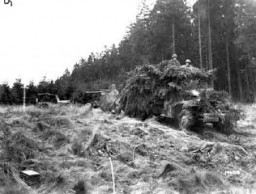
-
Page from The Poisonous Mushroom
PhotoPage from Der Giftpilz (The Poisonous Mushroom). This photograph shows a page from one of several antisemitic children's books published by Julius Streicher's Der Stürmer-Verlag, used for indoctrinating youth. The text reads, "The Jewish nose is crooked at its tip. It looks like the number 6."
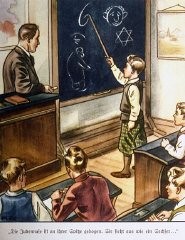
-
Coffins containing bodies of Jews killed in the Kielce pogrom
PhotoCoffins containing bodies of Jews killed in the Kielce pogrom. Poland, July 6, 1946. The mass violence of the Kielce pogrom drew on an entrenched local history of antisemitism–especially false allegations accusing Jews of using the blood of Christian children for ritual purposes (a charge known as a “blood libel”)–with the intent of discouraging the return of Jewish Holocaust survivors to Poland.
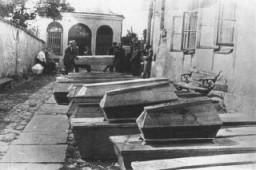
-
Illustration from an antisemitic German children's book
PhotoIllustration from an antisemitic German children's book, Der Giftpilz (The Poisonous Mushroom), used to indoctrinate children in the Nazi worldview. It was published in Nuremberg, Germany, in 1935. The caption to the image on the page shown here reads: "The Jewish nose is crooked, it looks like a 6."
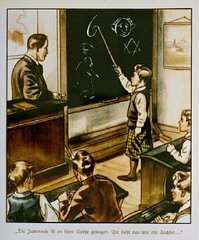
-
Opening statement of the prosecution at the Ministries Trial
PhotoUS Brigadier General Telford Taylor, chief counsel for war crimes, opens The Ministries Trial by reading the prosecution's opening statement. He charges Hitler's ministers with "crimes against humanity." Nuremberg, Germany, January 6, 1948.
